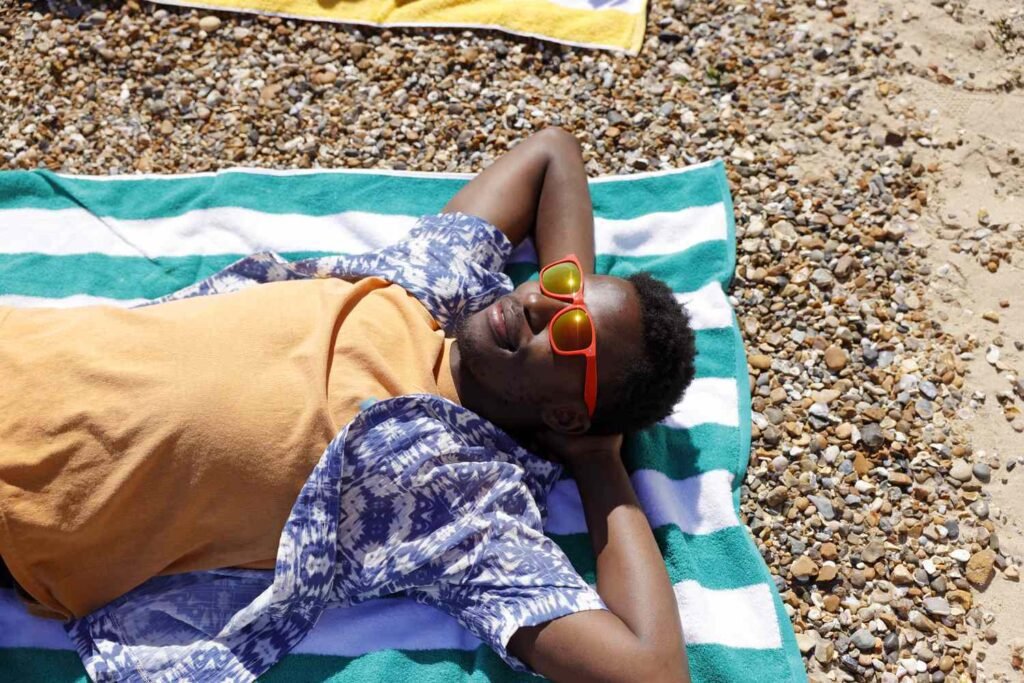Essential Summer Skin Safety: Your Guide to Protecting Your Skin from UV Rays
Spending time outdoors during the summer is a delightful way to stay active, but it is crucial to protect your skin from harmful ultraviolet (UV) rays. Here’s a comprehensive guide to ensure you enjoy the sun safely while keeping your skin healthy.
1. Use Sunscreen Effectively
Applying sunscreen is essential for protecting your skin from UV damage. Choose a broad-spectrum sunscreen that shields against both UVA and UVB rays. Here are key points to consider:
- SPF Recommendation: Aim for a sunscreen with an SPF of at least 30 for optimal protection.
- Application Tips:
- Apply generously on dry skin 15 minutes before heading outside.
- Use about 1 ounce (roughly the amount that fills a shot glass) to cover all exposed areas like your neck, face, ears, hands, and feet.
- Reapply every two hours, or more frequently if swimming or sweating heavily.
For detailed recommendations, check out the American Academy of Dermatology for expert insight.
2. Cover Exposed Skin
When the sun is intense, clothing can act as an effective barrier:
- Wear Sun-Protective Clothing: Opt for:
- Long-sleeved shirts and long pants
- Dark colors for added protection
- Tightly woven fabrics that block UV rays effectively
- Consider UV Protection Factor (UPF): If you spend extended time outdoors, look for clothing specifically designed with a high UPF.
Not all fabrics provide equal protection; if light penetrates, so do UV rays.
3. Wear UV-Blocking Sunglasses
Your eyes are sensitive to UV damage, so invest in quality sunglasses that:
- Block 99% to 100% of UVA and UVB rays.
- Have labels indicating "UV absorption up to 400 nm" or "meets ANSI UV requirements."
Avoid glasses with only cosmetic UV blocking, which typically offer minimal protection.
4. Choose a Wide-Brimmed Hat
A hat with a broad brim (at least 2-3 inches) can help shield your face, neck, and ears from the sun’s harmful rays. This simple accessory is a stylish and effective way to protect delicate skin areas particularly vulnerable to sun damage.
5. Avoid Sun Exposure During Peak Hours
Generally, the sun’s rays are most potent between 10 a.m. and 4 p.m. During these hours, try to:
- Stay indoors as much as possible.
- Keep blinds and curtains closed to maintain a cool indoor environment.
6. Seek Shade
If you are outdoors during peak sun exposure, use natural shade from trees or carry a portable sunshade. A simple rule of thumb: if your shadow is shorter than you, it’s time to seek shelter from the sun.
7. Stay Hydrated
Summer heat can lead to dehydration, which impacts skin health. To maintain hydration:
- Drink at least eight glasses of water daily, especially on hot days.
- Listen to your body—drink when you feel thirsty.
For insights on hydration, visit the Mayo Clinic.
8. Check the UV Index
The UV Index provides crucial information about UV radiation levels. When the index is 7 or higher, it indicates a heightened risk of harm from UV exposure. Always check the UV forecast from the National Weather Service before heading outdoors.
9. Practice After-Sun Care
Even with precautions, sunburn can occur. To support skin recovery:
- Cool your skin with cold compresses or a cool bath.
- Apply aloe vera gel or hydrating moisturizers to soothe irritated skin.
- Increase water intake to replenish lost fluids.
10. Be Mindful of Medications
Certain medications can increase your sensitivity to sunlight, including:
- Antibiotics
- Some acne treatments
- Certain antidepressants and antihistamines
If you’re on medication and spending time outdoors, consult your healthcare provider about necessary precautions.
Key Takeaways: Your Summer Sun Safety Essentials
To protect your skin during the summer months:
- Utilize a broad-spectrum sunscreen with at least SPF 30.
- Wear protective clothing, sunglasses, and wide-brimmed hats.
- Stay informed by checking the UV Index and avoid peak sun times.
- Ensure proper hydration and after-sun care to maintain skin health.
By following these guidelines, you can enjoy a safe and active summer outdoors. Remember, the key to enjoying the sun is protecting your skin effectively. For additional resources, visit the American Cancer Society for more information on skin safety.


